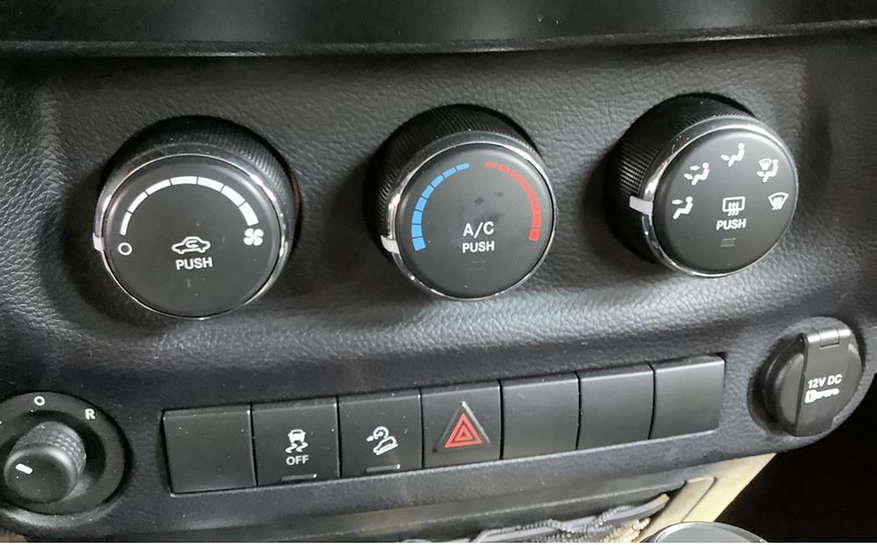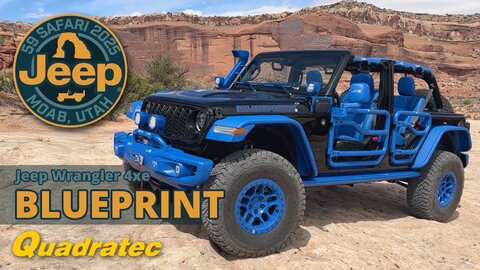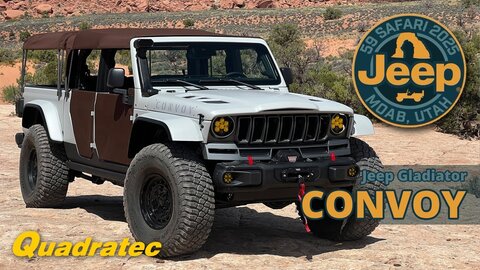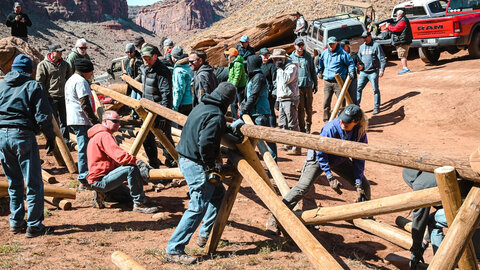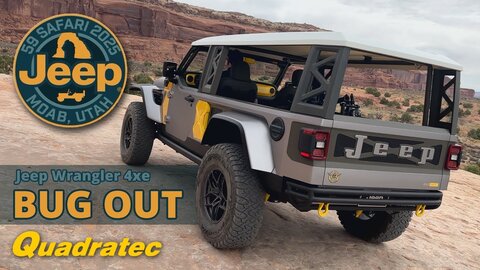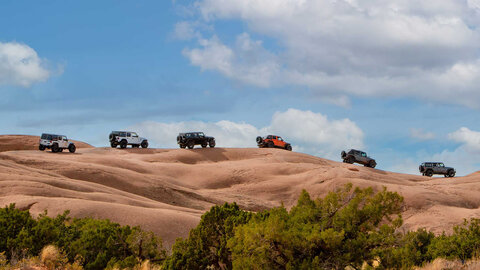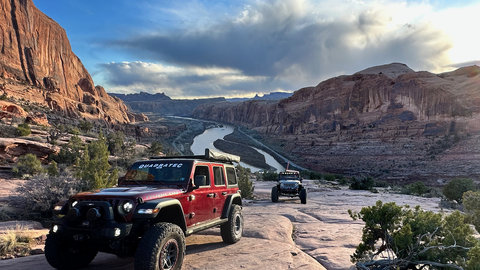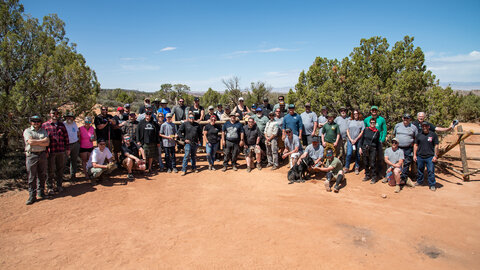by Matt Konkle
Managing Editor
For a lot of you out there it has been a mild winter so far this season. For others, well, that cold snap is kicking in and making things just a bit uncomfortable. And what can be even more uncomfortable is when you fire up your Jeep and nothing happens with the heater. Or worse, it just blows cold air.
Definitely uncomfortable.
So, you can try and deal with it by bundling up and using willpower to get through the next few months — maybe think good thoughts about summertime. You could even look into purchasing a back seat heater to warm up the cabin. Or, you can dive in and try to diagnose the actual heater problem itself.
So what to do.
First, a little background on how that Jeep heater works because hot air has to come from somewhere, right? And it comes, basically, from heat generated by the engine. When your Jeep reaches its optimal temperature, its thermostat opens and allows coolant from the cooling system to flow through the engine, removing heat and sending it into the radiator, then into the heater core which, ultimately, distributes it into the Jeep.
If your Jeep Wrangler’s heater has stopped working, most likely this process has failed in one way or another.
The next step then is to really look for the simplest things first.
In reality, there can be numerous reasons why your Jeep’s heater is not working properly. But here are four common things to check out first that may help resolve the problem.
Keep in mind, though, the newer the vehicle — such as JL Wrangler and JT Gladiator — the more electronics are involved in the heater system. So it may be beneficial for those with newer Jeeps to take a spin to the dealership, or a trusted mechanic, to get a proper diagnosis.
Heater Blower Motor / Resistor
This is the piece in charge of blowing air across the hot heater core, through the Jeep’s ventilation system, and into the cabin. The fan is usually located behind the glove box and when it fails, you may still get cold or warm air through the vents, but it will be at a drastically lower pressure no matter what fan speed you select. You may also hear a grinding or rattling noise from the fan area indicating a fan blade or bearing issue.
In the summer months, this kind of failure doesn’t really matter much—especially if you drive with the Jeep top down a lot. It also is unlikely to affect other components of the vehicle. In the winter, though, now it can become an issue.
Should the blower motor seem fine and pressure is not an issue, but the fan only works at some speed levels, then it could indicate a problem with the resistor. If this resistor begins to fail, then you will see air blow at only some of the fan speed settings. Should the resistor entirely fail, then no air will flow through the Jeep’s vents at all. Like the blower motor itself, the resistor is not a safety risk to other components, but it definitely makes things uncomfortable until a replacement is installed.
Coolant Level
Not having enough engine coolant (antifreeze) is something that will make your engine run hotter. Ironically, it also will prevent your vehicle from generating enough heat. That’s because low coolant levels mean there will not be enough (or any) coolant in the heater core and, thus, nothing hot enough for the blower motor to push into the cabin.
Luckily it is a quick and easy check.
If your engine’s coolant overflow bottle is low, or empty, you can refill to the designated level with the required antifreeze. That can be a little tricky for those with later model Wranglers, as Jeep used HOAT-type (Hybrid Organic Acid Technology) coolant through the 2012 model year, before swapping to OAT (Organic Acid Technology) in 2013.
Jeep does not recommend mixing the two, so if you are unsure what year Wrangler you drive, then check your VIN on the Jeep website. These days though, you can pick up coolant that is designed to work with all types which helps when you want to add to, or top off, your level. Also, make sure the coolant you are adding is either a premixed 50/50 blend with distilled water or that you have mixed it yourself. Don’t make the mistake of adding concentrated coolant into your overflow bottle. If you still are unsure about adding new stuff or want to start fresh, then flushing out the old coolant and refilling is certainly a good idea.
Additionally, and this cannot be stressed enough, never attempt to add coolant to the overflow bottle, or by removing the radiator cap while the engine is hot and/or under pressure. You risk scalding yourself. Always wait until the engine is cold.
Thermostat
Your Jeep’s thermostat is a valve that helps regulate engine temperature. This means, when the engine is cold then that valve stays closed—blocking coolant flow to the engine so it warms faster. Once the engine hits a certain temperature, then the valve opens and lets coolant into the radiator where it can cool off the engine and keep the Jeep from overheating.
The problem comes when the valve starts to fail in either a closed or open position. Should it stick closed, then your engine can quickly overheat which, hopefully, you notice before it is too late.
When the valve sticks open, then the engine runs cooler than normal and should cause the check engine light to illuminate. This will usually only allow the heater to blow out cold air as well, and you’ll additionally notice a loss of gas mileage. While this does not present an imminent threat to your engine, it should be dealt with sooner, rather than later, to return full functionality to your engine and the Jeep’s heating system.
If your engine temperature gauge rapidly shoots into the red after you start driving, then you’ll definitely want that thermostat checked—and replaced—as soon as possible. Also with as little driving as possible until replacement.
Heater Core / Hoses
Your vehicle’s heater hoses are the vessels that carry coolant from the engine to the heater core and normally come in a pair—an inlet and outlet.
A defective hose, whether it is a connection issue, rot, or they are torn in some way, can cause coolant to leak and you should smell coolant in the engine bay. If that coolant splashes onto the heater core, then the smell probably will intrude into the cabin.
This will also cause the engine to run hotter and will affect the temperature level of the Jeep’s heating system.
However, even if there is no coolant smell, but an issue with the heater, it is a good idea to check these hoses for heat. If the engine is warm, then you should feel heat from the hoses as well. If not, then the coolant is not circulating properly and you could have air in the lines or a clogged heater core that needs a flush.
Other Articles That May Interest You:
How To Enjoy Jeep Winter Driving













